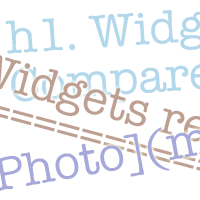Often it’s useful to know how many elements an array contains. Here are some common reasons for counting the number of elements in an array:
- You can then use a
forloop to move through the elements - You can display the total number of elements to the user (such as the number of search results returned)
- You can calculate the average of the values in the array (in conjunction with
array_sum())
PHP makes it easy to count array elements, thanks to its built-in count() function. In this tutorial you’ll learn how to use count() to count the elements in both regular and multidimensional arrays, and how to move through all the elements of an indexed array by using count() and a for loop.
[Read more…] about Counting PHP Array Elements Using count()




 Now that you know how to
Now that you know how to  These days, many websites allow you to enter your own content — whether it’s creating a Web page, writing a blog post, or posting in a forum. In order to allow people to enter richly-formatted text and images, many sites use WYSIWYG (What You See Is What You Get) HTML editors. Great though these editors are, they do have a few drawbacks.
These days, many websites allow you to enter your own content — whether it’s creating a Web page, writing a blog post, or posting in a forum. In order to allow people to enter richly-formatted text and images, many sites use WYSIWYG (What You See Is What You Get) HTML editors. Great though these editors are, they do have a few drawbacks.